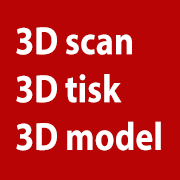
Reklama
3D tiskárny



AONN.cz
Sp┼Ö├ítelen├ę Weby
|
3D modely ARTFunerary Stele of Phainippos at The Louvre, Paris

This Pentelic Marble funerary stele of Phainippos was created around 350BC and was found in Athens. The inscription engraved on the archway of this stele allows us to identify the figures. On the left, Phainippos, son of Polyxénos, gripping the hand of Mnésaréte, wife of Hippostratos, perhaps a spouse, in a sign of saying farewell (déxiosis*). This gesture can be found in mary funerary monuments, such as the one beside this one (Funerary stele of Mnésaréte). In the background, the hand held to the face signals an affliction, holding or restraining Mnésaréte, wife of Socrates. The small person wearing the chiton (tunic) represented to the right of the figures probably depicts a servant. At the time of the IV Century BC, the amount of figures in funerary steles multiplied, to depict family reunion. This monument which depicts four people, offers an example of this type of representation. *exiosis (‘to give (someone) the right (hand)’ δεξι¤îς, dexios ‘right’, Latin dextrarum iunctio ‚’joining together of the right hands’) is a term used in fine arts for the representation of two people offering each other their right hand. The dexiosis reliefs from Commagene are well known, in which the then ruler is shown shaking hands with gods. Dexiosis reliefs are also known from Roman gravestones, which show the deceased with their spouses. Similarly dexiosis reliefs are found on ancient coins, on which they are intended to show the bonds between two cities by shaking hands. Portrayals of dexiosis are also known from much earlier times when they appeared on vase paintings. n├íhodn├Ż v├Żb─Ťr model┼»
|
©Ofrii 2012
| |||